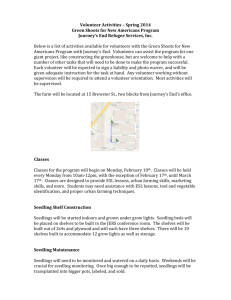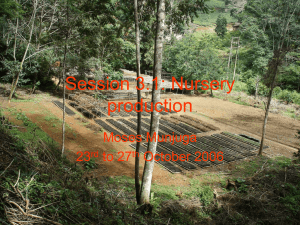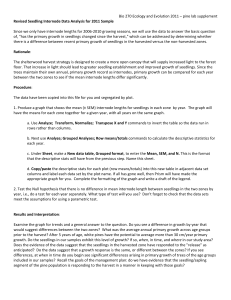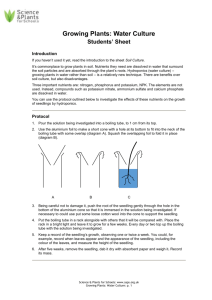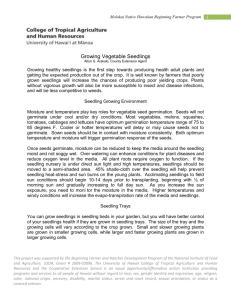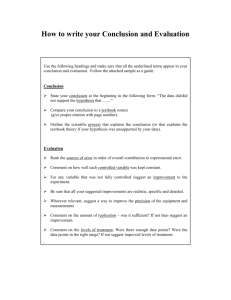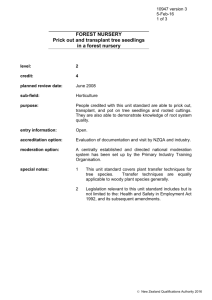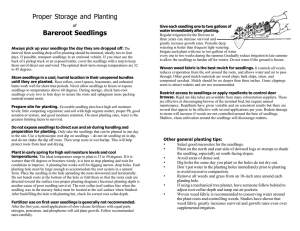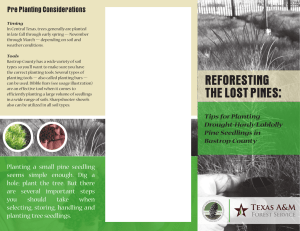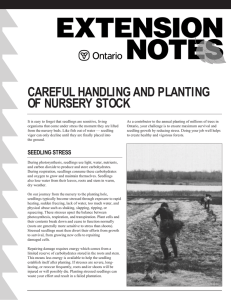Seedling planting
advertisement
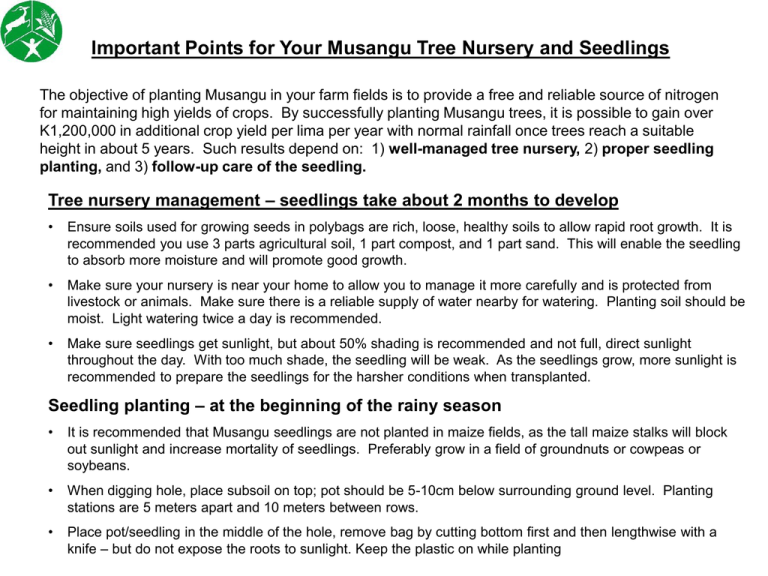
Important Points for Your Musangu Tree Nursery and Seedlings The objective of planting Musangu in your farm fields is to provide a free and reliable source of nitrogen for maintaining high yields of crops. By successfully planting Musangu trees, it is possible to gain over K1,200,000 in additional crop yield per lima per year with normal rainfall once trees reach a suitable height in about 5 years. Such results depend on: 1) well-managed tree nursery, 2) proper seedling planting, and 3) follow-up care of the seedling. Tree nursery management – seedlings take about 2 months to develop • Ensure soils used for growing seeds in polybags are rich, loose, healthy soils to allow rapid root growth. It is recommended you use 3 parts agricultural soil, 1 part compost, and 1 part sand. This will enable the seedling to absorb more moisture and will promote good growth. • Make sure your nursery is near your home to allow you to manage it more carefully and is protected from livestock or animals. Make sure there is a reliable supply of water nearby for watering. Planting soil should be moist. Light watering twice a day is recommended. • Make sure seedlings get sunlight, but about 50% shading is recommended and not full, direct sunlight throughout the day. With too much shade, the seedling will be weak. As the seedlings grow, more sunlight is recommended to prepare the seedlings for the harsher conditions when transplanted. Seedling planting – at the beginning of the rainy season • It is recommended that Musangu seedlings are not planted in maize fields, as the tall maize stalks will block out sunlight and increase mortality of seedlings. Preferably grow in a field of groundnuts or cowpeas or soybeans. • When digging hole, place subsoil on top; pot should be 5-10cm below surrounding ground level. Planting stations are 5 meters apart and 10 meters between rows. • Place pot/seedling in the middle of the hole, remove bag by cutting bottom first and then lengthwise with a knife – but do not expose the roots to sunlight. Keep the plastic on while planting • Backfill soil, THEN pull plastic bag out. • Eliminate air pockets by pressing soil around seedling. • Leave a slight depression around the seedling to create a micro-catchment for rainwater • Plant during early morning or late afternoon when cool, preferably in the late afternoon. • Place an ample amount of mulch around the base of the seedlings and remove all weeds if any at time of planting Caring for seedling once planted • It is important that roots are NOT exposed to direct sunlight during planting • Water the seedlings as needed to ensure they do not dry out • Keep the base of the seedlings free of weeds and keep the ground covered with mulch Important Points for Your Gliricidia Tree Nursery and Seedlings Gliricidia is an excellent nitrogen fixer and grows fast, but the seeds are often hard to find, unlike Musangu seeds. Requirements for tree nursery are similar to Musangu, except the size of the polythene potting bag is smaller. Because of the larger number of seedlings that need to be planted in-between maize rows, the nursery will be much larger than that for Musangu. As for Musangu, it is necessary to keep the seedlings protected from livestock, including chickens. Seedling plantings are 60-90 cm apart and rows of seedlings are spaced 3-4 meters apart. Gliricidia needs 6-8 weeks before transplanting and should not be more than 8 weeks old or the seedlings become difficult to transplant. In the last two weeks before they are transplanted, the seedlings should be watered less frequently and exposed to full sunlight.

